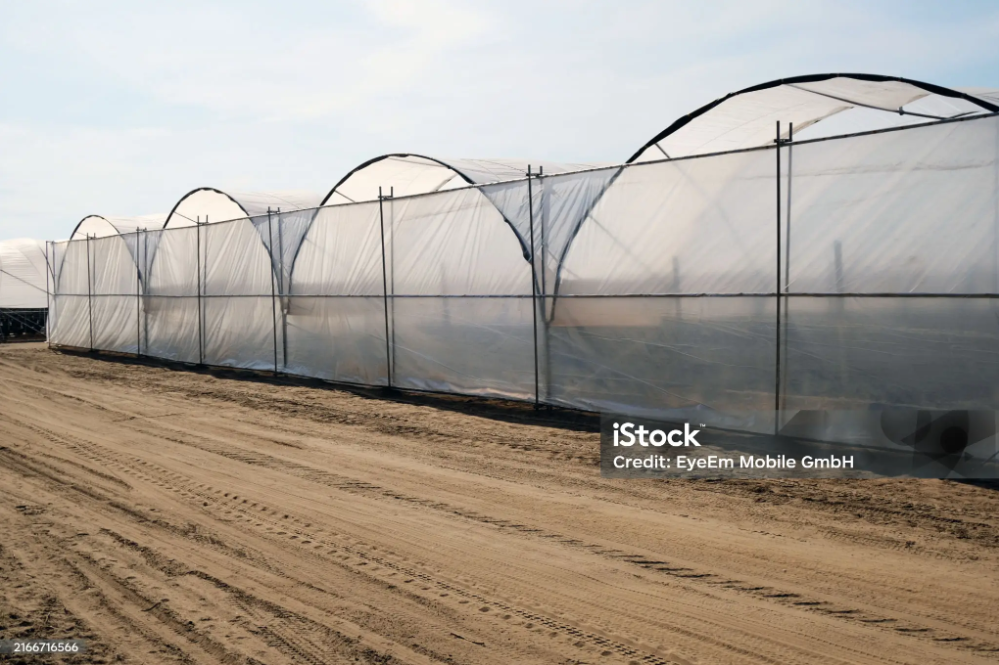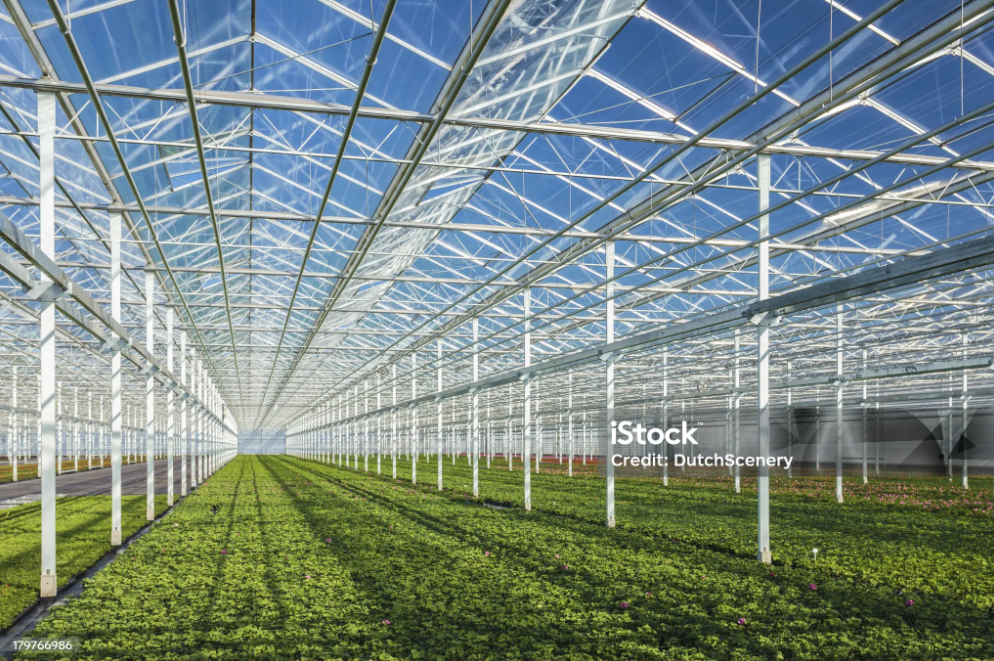In the rapid development of modern agriculture, greenhouse technology plays a pivotal role. It breaks the traditional dependence on natural climatic conditions, enabling crops to grow year-round in a controlled environment. At the heart of this technology lies greenhouse film, a critical component. Far from being a simple covering material, greenhouse film creates an ideal micro-environment for crops through its unique design and multifunctional properties, significantly enhancing both yield and quality.
This article delves into various aspects of greenhouse film, from its wide-ranging applications to its exceptional performance, aiming to comprehensively showcase its vital role and immense potential in modern agriculture. We will analyze how different types of greenhouse films adapt to diverse planting needs, as well as their technical principles and practical effects in regulating temperature, light, humidity, and pest control. By gaining a thorough understanding of greenhouse film, we hope to provide valuable insights for agricultural producers and collectively advance agriculture toward greater efficiency and sustainability.

As a key covering material in agricultural production, greenhouse film is used in an extensive array of scenarios, spanning various greenhouse structures and crop cultivation needs. Depending on the type of greenhouse and specific applications, greenhouse film demonstrates remarkable adaptability and functionality.
Greenhouse film can be applied to multiple greenhouse structures, the most common of which include single-layer and double-layer film greenhouses. Single-layer film greenhouses typically use a single layer of plastic film as the covering material, often designed in an arched or peaked shape. These greenhouses are cost-effective, with low initial investment, making them suitable for temperate climates or seasonal use in spring and autumn. Their large light-admitting area ensures high light transmission, with new films achieving over 95% transmittance, allowing crops to absorb ample sunlight. However, due to the single-layer design, their insulation performance in winter is relatively poor, leading to higher operational costs in northern regions. In southern areas, supplemental heating can enable year-round use.
Double-layer film greenhouses, particularly double-layer inflated film greenhouses, feature an insulating air layer between two films. This design significantly enhances thermal insulation, creating a stable micro-environment that effectively regulates temperature and humidity, ensuring optimal crop growth. Double-layer inflated film greenhouses are better suited for northern regions or crops requiring higher insulation. They offer excellent light transmission and insulation while being energy-efficient and economical.
The applications of greenhouse film are incredibly diverse, covering nearly all agricultural sectors requiring environmental control, including but not limited to flower cultivation, seedling propagation, fruit and vegetable farming, and specialized breeding. For example:
• Flower Cultivation: Greenhouse film provides a stable growth environment for flowers, shielding them from external climate fluctuations that could affect blooming, thereby ensuring quality and yield—especially for high-value flowers sensitive to temperature and humidity.
• Seedling Propagation: During the seedling stage, young plants are highly sensitive to environmental conditions. Greenhouse film offers suitable temperature, humidity, and light, improving survival rates and seedling vigor, laying a solid foundation for subsequent field planting.
• Fruit and Vegetable Farming: Whether for vegetables like cucumbers, tomatoes, and peppers, or fruits like strawberries and melons, greenhouse film delivers optimal growing conditions. For instance, in rainy southern regions, grape cultivation under multi-span film greenhouses can reduce downy mildew incidence and enhance marketable yield. In temperate zones, greenhouses can simulate tropical climates, enabling the cultivation of tropical/subtropical crops further north.
• Specialized Breeding: Beyond plant cultivation, greenhouse film is sometimes used in breeding environments with specific temperature and humidity requirements.
Additionally, multi-span film greenhouses are widely employed in urban farms, home gardens, and commercial agriculture, even appearing in rooftop gardens. The use of greenhouse film liberates agricultural production from seasonal and geographical constraints, enriching food supplies and driving the modernization of agriculture.
Greenhouse film plays a central role in modern agriculture due to its array of superior properties. These properties work synergistically to create a stable, controllable growth environment for crops, achieving goals of increased yield, improved quality, and sustainable practices. Below, we detail the key performance characteristics of greenhouse film:
Greenhouse film is instrumental in regulating the internal environment. It effectively controls temperature, light, and humidity, providing optimal growing conditions. For example, in winter, it retains heat, preventing loss and maintaining higher internal temperatures than the outside environment. In summer, when combined with shading and ventilation systems, it helps lower temperatures to avoid heat stress on crops.
Regarding light, advanced greenhouse films optimize light transmission and diffusion, ensuring plants receive sufficient and uniform light for photosynthesis. Some cutting-edge films can even convert harmful UV rays into beneficial "light fertilizer," improving light quality and utilization to promote growth.
Humidity control is another critical function. Through film properties and ventilation, greenhouse humidity can be adjusted to reduce pest and disease risks, meeting the varying needs of different crops.
Certain specialized films also feature oxygen barrier capabilities, essential for specific applications like silage storage, where anaerobic conditions are required to prevent spoilage.
UV radiation is a primary cause of agricultural film degradation, reducing light transmission and shortening lifespan. High-quality greenhouse films incorporate UV-resistant additives, offering exceptional durability. For instance, ETFE films, with their strong UV resistance, can last up to 8 times longer than traditional polyethylene covers, often exceeding 25 years without significant performance decline. This longevity ensures stability and cost-effectiveness.
Visible light transmittance is a key metric for greenhouse film performance, directly impacting photosynthesis efficiency. It measures the percentage of visible light (especially Photosynthetically Active Radiation, PAR, 400–700 nm) entering the greenhouse. High transmittance maximizes light availability for plant growth. Modern plastic films achieve 80%–90% transmittance initially, but this can decline due to dust, water droplets, and aging. Selecting films with slow transmittance decay is crucial.
Thermal insulation is one of the most fundamental and vital properties, especially in cold seasons or at night. Greenhouse films minimize heat loss, maintaining internal temperatures. High-insulation films include additives that reflect infrared radiation back into the greenhouse, reducing nighttime heat loss and keeping foliage dry to prevent disease. PVC films, with low infrared transmittance, excel in insulation.

Light diffusion converts direct sunlight into scattered light, distributing it evenly throughout the greenhouse. This prevents leaf scorching, reduces heat stress, and ensures lower plant parts receive adequate light, particularly in high-sun regions or seasons. Uniform light distribution enhances photosynthesis and yield.
Anti-drip performance refers to a film's ability to form a continuous water layer rather than droplets on its surface. Condensation inside greenhouses can reduce light transmission and drip onto plants, causing disease. High-performance anti-drip films channel water into a thin layer that flows off, maintaining clarity and plant health. Advanced films retain this function for over 5 months, with some lasting the film's lifetime.
Closely related to anti-drip performance, the anti-fog function prevents fog formation on the film surface, which can obscure light and foster disease. Anti-fog films use special coatings or additives to absorb moisture, maintaining transparency. Some offer permanent anti-fog properties.
Chemical resistance denotes a film's ability to withstand pesticides, fertilizers, and other chemicals. Frequent chemical use in greenhouses can degrade films lacking this property. High-quality films resist chemical erosion, preserving their physical and optical integrity.
Beyond indirect control via environmental regulation, some films directly combat pests and diseases. For example, certain films alter light spectra to repel pests or inhibit fungal spore formation, reducing chemical pesticide use and supporting eco-friendly farming.
Unlike UV resistance, UV-transmissive films allow specific UV wavelengths (e.g., UV-A) to pass through, benefiting certain crops. Moderate UV exposure can enhance coloration, flavor, and stress resistance in plants. It also aids pollinator activity, improving fruit set.
Dust-resistant films repel or are easy to clean, preventing dust accumulation that reduces light transmission. These films incorporate anti-dust additives or surface treatments to stay clear, minimizing maintenance and maximizing light availability.

Copyright ©Kunyu Greenhouse Co., Ltd. All Rights Reserved | Sitemap